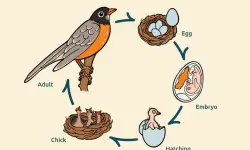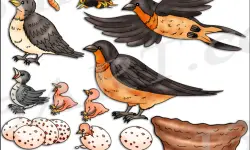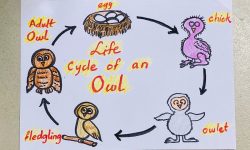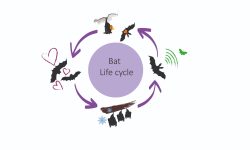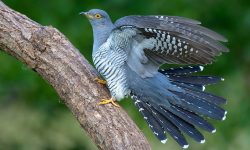Songbirds, known scientifically as passerines, are the vibrant voices of the natural world. Found on every continent except Antarctica, these remarkable birds have captivated scientists and bird enthusiasts alike for their color, complexity, and song. What makes a songbird truly unique? Here are 25 fascinating characteristics that define and distinguish these birds.

1. Vocal Learning Abilities
Vocal learning is one of the most remarkable cognitive skills found in songbirds, setting them apart from most other animals. Unlike innate calls that are genetically encoded, the songs of songbirds are acquired through a sophisticated learning process that parallels human speech development. As nestlings, young birds enter a critical learning phase in which they attentively listen to adult conspecifics—usually territorial males—and memorize their songs. This mental blueprint is stored and later used during a period of vocal practice.
In this practice stage, juveniles produce soft, unstructured sounds called “subsong,” akin to babbling in human infants. With time, these vocalizations become increasingly structured through a process known as sensorimotor learning, where the bird compares its output to the memorized model and adjusts accordingly. This feedback loop, driven by auditory perception and neural plasticity, results in the formation of crystallized, species-specific songs. In some species, such as mockingbirds and European starlings, this learning capacity extends into adulthood, allowing them to incorporate new sounds and mimic other species or environmental noises.
2. Complex Syrinx Structure
The syrinx is the uniquely avian sound-producing organ that gives songbirds their extraordinary vocal range. Located where the trachea splits into the bronchi, the syrinx contains specialized vibrating membranes and muscular control far more advanced than human vocal cords. In many songbirds, this organ is divided and independently controlled on each side, allowing them to produce two separate notes at once—a phenomenon known as “biphonation.” This dual-toned ability enables some species to sing harmonies with themselves or alternate rapidly between pitches and tones.
Its location deep in the chest, closer to the lungs, allows for powerful projection and a wide frequency range. Combined with their fine motor control and neural precision, songbirds can execute intricate trills, warbles, and whistles that vary not only by species but by individual. The complexity of the syrinx is key to the dazzling diversity of birdsong across the globe.
3. Regional Song Dialects
Songbirds not only learn how to sing—they also learn where to sing like. Much like regional accents in human speech, many songbirds develop localized dialects based on their geographic location. These dialects arise as young birds learn songs from their immediate surroundings, often imitating nearby adults. Over time, isolated populations can develop distinctive versions of the same species’ song, complete with different rhythms, tones, and phrases.
These song dialects play a vital role in social cohesion and mate selection. Birds are more likely to recognize and accept others who sing the same dialect, which helps maintain population boundaries and reduce hybridization. In some cases, females even show a strong preference for mates that sing their local dialect over those from a different region. The study of dialect variation not only reveals the cultural dimension of bird song but also serves as a valuable tool for tracking migration patterns and evolutionary divergence.
4. Seasonal Singing
One of the most enchanting aspects of songbirds is their seasonal burst of song, primarily timed with the breeding season. In early spring, rising temperatures and lengthening daylight trigger hormonal changes—particularly increased testosterone levels in males—which stimulate vocal activity. Singing serves two critical purposes: to attract a mate and to defend a territory from rivals.
Each species has its own calendar, but many begin their vocal performances during the early hours of the morning in what’s known as the “dawn chorus.” During this time, ambient noise is low, air conditions help sound travel farther, and females are most receptive. The intensity and complexity of these songs often peak in spring and early summer and gradually decline once nesting begins. By late summer or fall, most songbirds fall silent, conserving energy for migration or molting. This seasonal rhythm of song is a powerful indicator of ecological cycles and reproductive timing.
5. Plumage Brightness
The vibrant colors of songbirds are not just for show—they play a crucial role in communication, courtship, and survival. In many species, especially among males, brilliant hues like crimson red, emerald green, and electric blue serve as visual signals of genetic fitness and overall health. These colors are often intensified by diet, with pigments like carotenoids (from berries or insects) influencing feather brightness and saturation.
Bright plumage can help a male stand out in dense foliage, catching the eye of potential mates while also signaling dominance to rivals. Some species use their colorful feathers in coordinated courtship displays, fanning wings or puffing chests to create maximum visual impact. However, this vivid appearance comes with trade-offs—making birds more visible to predators. The balance between attraction and camouflage is a fine-tuned evolutionary dance, and plumage brightness is a dynamic trait shaped by both natural and sexual selection.
6. Structural Coloration
The dazzling hues seen in many songbirds—especially iridescent blues, greens, and purples—aren’t created by pigment but by microscopic structures within their feathers. These nanostructures manipulate the way light is reflected, refracted, and scattered, producing vivid colors through a phenomenon known as structural coloration. For example, a bluebird’s feathers don’t contain blue pigment at all. Instead, tiny air pockets and keratin layers refract light in a way that makes blue wavelengths visible to the observer.
What’s even more remarkable is that these structural colors can appear to change depending on the angle of light and viewing perspective, giving some birds an almost metallic or shimmering appearance. This trait not only enhances visual appeal during courtship rituals but may also help in species recognition and camouflage depending on the lighting environment. Structural coloration represents an evolutionary marvel where physics meets biology to create living rainbows.
7. Feather Molting
Feather molting is an essential biological process that ensures songbirds maintain optimal flight performance and vibrant appearance. Over time, feathers become worn and less aerodynamic due to exposure to sunlight, weather, and physical activity. To counter this, most songbirds undergo a complete or partial molt once or twice a year, usually after the breeding season when energy demands are lower.
During molting, old feathers are shed in a carefully timed sequence to prevent gaps that would compromise flight. In many species, wing and tail feathers are replaced symmetrically to maintain balance. Some tropical songbirds molt gradually throughout the year, while temperate species often follow more defined molting cycles. The quality and coloration of new feathers can also signal a bird’s health and fitness, playing a role in future courtship success. Though vulnerable during this time, molting is a finely regulated process that reflects the bird’s physiological condition and environmental stability.
8. Lightweight Skeleton
Songbirds are engineered for flight, and their lightweight skeletons are a marvel of evolutionary design. Unlike mammals, many of their bones are pneumatized—hollow and reinforced with internal struts—which dramatically reduces overall body weight without sacrificing strength or durability. This skeletal structure allows for sustained, energy-efficient flight over long distances and through complex environments like forests or shrublands.
In addition to hollow bones, songbirds have a fused collarbone (furcula or wishbone) and a keeled sternum, which provide strong attachment points for the powerful flight muscles needed for rapid wingbeats. Their skulls are also thin and delicate yet sufficiently protective of a highly developed brain. The combination of reduced mass and optimized bone architecture gives songbirds the agility, maneuverability, and endurance that define their aerial lifestyle.
9. Specialized Feet
One of the most functional anatomical features of songbirds is their anisodactyl foot structure—three toes pointing forward and one pointing backward. This arrangement provides exceptional grip and balance, allowing them to cling tightly to branches, reeds, and wires with ease. It’s this specialized toe configuration that enables songbirds to perch securely even while sleeping, with flexor tendons that lock the toes around a branch when the bird rests.
These feet are not just built for holding still. Songbirds use them with surprising dexterity for short hops along branches, agile maneuvers in dense foliage, and even climbing vertically in some species. The backward-facing toe (hallux) is particularly important for stability, acting like a natural hook. This evolutionary design gives songbirds versatility in various habitats—from treetops to shrubs, fences to reeds—and is one reason they have successfully colonized such diverse environments.
10. Monogamous Pairing
Monogamy is a common and often enduring trait among songbirds, particularly during the breeding season. In many species, males and females form strong pair bonds, working together in remarkable cooperation. This partnership typically involves the male courting the female through song and display, followed by joint efforts in nest construction, egg incubation, and chick rearing.
Once a bond is established, both parents share responsibilities almost equally. Males often defend the territory and gather food, while females incubate the eggs and brood hatchlings. In some species, such as the northern cardinal or barn swallow, pairs may even reunite across multiple seasons. Though extra-pair matings can occur in some populations, the cooperative nature of monogamous pairing ensures higher chick survival and strengthens family structure—a vital aspect of songbird reproductive success.
11. Elaborate Courtship Displays
Songbirds are not only gifted singers but also skilled performers. During mating season, many species combine their vocal talents with theatrical displays that involve a variety of movements and postures. These courtship rituals can include wing spreading, tail fanning, hopping, bowing, puffing out colorful feathers, or choreographed dances—all aimed at catching the attention of a potential mate.
The intricacy of these displays is often a direct signal of the male’s health, strength, and genetic quality. For instance, a well-executed dance or prolonged, complex song can indicate strong physical condition and neurological coordination. Some species, like the superb lyrebird or red-capped manakin, have developed astonishingly elaborate performances that blend sound and movement in displays as captivating as any natural spectacle. These performances are not only beautiful but serve as powerful tools in sexual selection, helping females choose the most fit partner.
12. Insectivorous Diets
A majority of songbirds rely heavily on insects for nourishment, especially during the breeding season. Insects are a rich source of protein and essential nutrients, making them ideal for both adult birds and their rapidly growing chicks. Caterpillars, beetles, flies, ants, and spiders are among the most commonly consumed prey.
During nesting, parent birds may feed their young dozens of insects per hour. This voracious appetite for bugs makes songbirds some of the most effective natural pest controllers in ecosystems. Their feeding activity helps regulate insect populations, protecting forests, gardens, and even agricultural crops from outbreaks of pests. Insectivory is not just about survival—it is a vital ecological service that ties songbirds to the health and balance of their environments.
13. Fruit and Nectar Feeders
While many songbirds feast on insects, others supplement or specialize in consuming fruit, berries, and even nectar. These birds have adapted their beaks and digestive systems to handle sugary, high-energy food sources. Species like the cedar waxwing gorge on berries during late summer, while orioles and sunbirds are known to sip nectar using brush-tipped tongues that can reach deep into blossoms.
Beyond nourishment, these feeding habits serve crucial ecological roles. When birds consume fruit, they often disperse seeds through their droppings far from the parent plant, aiding forest regeneration and biodiversity. Nectar-feeding songbirds, meanwhile, act as pollinators, brushing against flower stamens and transferring pollen as they feed. This mutually beneficial relationship between plants and birds highlights how songbirds not only thrive in their habitats but help shape and sustain them.
14. Migratory Patterns
Migration is one of the most extraordinary behaviors in the songbird world. Many species, including warblers, thrushes, and flycatchers, undertake seasonal journeys that span thousands of miles—traveling from breeding grounds in North America to wintering habitats in Central and South America. These migrations are not random but follow precise, inherited routes and timing that are often remarkably consistent year after year.
Migration allows songbirds to exploit seasonal resources. They breed in temperate regions during times of insect abundance, then escape harsh winters by relocating to warmer climates where food is still available. Despite their small size, some songbirds make nonstop flights over oceans or deserts, relying on fat reserves, favorable winds, and night navigation. The physiological changes that prepare them for migration—such as muscle development, fat accumulation, and hormonal shifts—are all part of a finely tuned internal clock driven by daylight cycles and environmental cues.
15. Magnetic Navigation
One of the most astonishing adaptations in some migratory songbirds is their ability to sense the Earth’s magnetic field. This internal compass, known as magnetoreception, allows them to orient themselves and navigate vast distances with remarkable precision—even during cloudy nights or over unfamiliar terrain. Specialized magnetite-based receptors in their upper beaks and light-sensitive molecules in their eyes are believed to work in tandem with brain structures, enabling birds to detect magnetic inclination, polarity, and intensity.
Some species use this magnetic map as a supplement to celestial cues and geographic landmarks, forming a multi-modal navigational system. Young birds learn these routes through innate programming, but also fine-tune their skills through experience and environmental feedback. The complexity and accuracy of this sensory ability remain one of the most fascinating frontiers in avian science, offering insight into the neurobiology of long-distance migration.
16. Remarkable Memory
Some songbirds exhibit extraordinary spatial memory, especially species that rely on food caching to survive winter. Chickadees, for example, can remember hundreds—sometimes thousands—of locations where they’ve hidden seeds or insects. They return to these caches weeks or even months later, navigating by subtle environmental landmarks and spatial cues.
This cognitive feat involves not just memory but also a specialized part of the brain called the hippocampus, which is significantly larger and more active in food-storing birds. In fact, research shows that the hippocampus of these birds actually grows during fall and winter, the times when spatial memory is most critical. This plasticity in brain function highlights how songbirds can adapt their cognition to seasonal needs, making them not only vocal virtuosos but mental athletes of the avian world.
17. Camouflaged Nests
Songbirds have mastered the art of stealth through the clever construction and placement of their nests. Instead of building out in the open, most species carefully conceal their nests in dense vegetation, thickets, tree forks, or even hidden crevices. They often select nesting sites that blend seamlessly into the surroundings, reducing the chances of detection by predators such as snakes, raccoons, or birds of prey.
To enhance camouflage, songbirds use a variety of natural materials—grass, moss, bark, spider silk, and feathers—not only for structure but for disguise. Some even incorporate bits of lichen or leaves that mimic their immediate environment. The nest itself may be cup-shaped, dome-like, or woven, depending on the species and habitat. These structures serve not just as a cradle for eggs but as the first line of defense for their vulnerable young. Through evolutionary trial and error, songbirds have become architects of concealment, transforming basic materials into life-saving shelters.
18. Nestling Vocalization
From the moment they hatch, nestling songbirds begin vocalizing—not with songs, but with high-pitched, repetitive chirps. These early vocalizations are not only instinctive cries for food but also sophisticated signals that help parents locate and distinguish their own offspring within crowded nests. Each chick’s voice develops a unique acoustic signature, allowing adults to respond accurately, even in a noisy brood.
These soft but persistent calls also serve as an important tool in coordinating feeding among siblings. In some species, louder or more frequent begging calls may influence how food is distributed, subtly shaping sibling competition and survival. Researchers have found that even blind, featherless chicks are capable of modulating their calls in response to hunger, temperature, or parental proximity. Thus, nestling vocalization is not just noise—it’s a finely tuned communication system that begins in the very first days of life.
19. Fledgling Learning
The transition from nestling to fledgling marks a critical stage in a songbird’s development. During this period, young birds leave the safety of the nest to begin learning the essential skills needed for survival—flying, foraging, and social interaction. This phase is guided by parental supervision, with adult birds often continuing to feed, protect, and teach their offspring for several days or even weeks.
Fledglings engage in short, clumsy flights that gradually improve in strength and coordination. They also begin imitating adult behaviors, including exploratory pecking, responding to alarm calls, and practicing fragments of song. This time of trial and error helps them build both physical competence and environmental awareness. Survival during the fledgling stage is precarious, as they are vulnerable to predators and environmental hazards, but it’s also one of the most dynamic and formative chapters in a songbird’s life.
20. Predation Evasion
Living in the open skies and forest canopies, songbirds face constant threats from predators—hawks, snakes, cats, and more. To survive, they’ve developed a remarkable array of evasion strategies. One of the most effective is the use of alarm calls: sharp, high-frequency sounds that alert nearby birds to danger and sometimes even signal the type of predator.
In addition to vocal warnings, many species employ distraction displays. A parent bird may feign injury—dragging a wing or fluttering on the ground—to lure a predator away from its nest. Others take to the air with unpredictable, zigzagging flight patterns that make it difficult for raptors to lock on during a chase. Camouflaged plumage and secretive nesting habits add another layer of defense.
Some songbirds even coordinate with other species in mixed-species flocks, where more eyes and ears improve predator detection. These behaviors show how songbirds have evolved complex and cooperative tactics to increase their chances of survival in a dangerous world.
21. Territorial Aggression
For many male songbirds, territory is everything during the breeding season. These birds engage in fierce competition to claim and defend prime nesting and feeding areas. Territorial aggression begins with song—loud, repetitive, and strategically placed to signal ownership. The very act of singing from prominent perches not only attracts mates but serves as a warning to rivals: this space is taken.
When vocal warnings aren’t enough, some males escalate their defense through visual displays, wing flapping, and aerial chases. In extreme cases, birds may engage in physical confrontations, including pecking, clawing, or grappling in midair. These behaviors are fueled by surging hormones and are finely tuned to minimize injury while maximizing deterrence.
Such aggression isn’t just bravado—it plays a vital ecological role. By maintaining territories, songbirds reduce overcrowding and ensure better access to food and nesting sites, which ultimately improves reproductive success. It’s a high-stakes game where the loudest, fittest, and most persistent often win the right to pass on their genes.
22. Diurnal Activity
Songbirds are diurnal creatures, meaning they are most active during the daylight hours. Their daily rhythms are closely tied to the sun, with peak activity typically occurring around sunrise and sunset. One of the most iconic expressions of this behavior is the “dawn chorus”—a vibrant, early morning symphony of overlapping bird songs.
This synchronized burst of song serves several purposes. At dawn, sound travels farther in the still, cool air, and the absence of visual distractions makes vocal communication more effective. Singing at this time helps males establish territory, attract mates, and signal their fitness. After a brief lull during the hottest part of the day, some species resume singing in the evening. Their reliance on daylight not only governs their feeding, mating, and nesting behaviors but also synchronizes with the biological rhythms of plants and insects, tying songbirds tightly to the natural pulse of their environment.
23. UV Vision
While humans are blind to ultraviolet (UV) wavelengths, many songbirds see this hidden spectrum clearly. Their eyes contain a special type of cone cell sensitive to UV light, allowing them to detect colors and patterns invisible to us. This UV vision plays a crucial role in communication, mate selection, and foraging.
For example, plumage that appears plain to human observers may reflect brilliant UV patterns to other birds, helping individuals assess the health and quality of potential mates. Some species have UV-reflective patches on their feathers used specifically for sexual signaling. In addition, UV sensitivity enhances food detection—many fruits, seeds, and even insect markings reflect UV light, making them easier to spot against green foliage.
This sensory ability provides a literal new dimension to the way songbirds interact with their world, giving them an advantage in environments where color plays a vital role in survival and reproduction.
24. Cultural Transmission
One of the most fascinating aspects of songbird communication is that their songs are not hardwired—they are culturally transmitted. This means that songbirds learn their vocalizations from adult conspecifics (members of their own species), rather than inheriting them genetically. The learning process begins early in life, often during a sensitive developmental window when the young bird listens attentively to the songs of nearby adults, typically the father.
Without exposure to species-specific song during this crucial period, a young bird may develop abnormal or incomplete songs, or even adopt the calls of a different species. This phenomenon has been demonstrated in laboratory experiments and in nature, where birds raised in isolation sing distorted or simplified versions of normal songs.
Cultural transmission leads to regional dialects and generational evolution of song, forming a vocal tradition within bird populations. Just like human language, bird song can change subtly over time and spread through communities. This dynamic learning system highlights the complex social structures and cognitive flexibility of songbirds, placing them among the most culturally rich animals in the natural world.
25. Ecological Indicators
Songbirds are more than just charming vocalists—they are vital barometers of environmental health. Because they are sensitive to changes in climate, habitat quality, pollution, and food availability, fluctuations in songbird populations can signal early warning signs of ecosystem distress. Researchers and conservationists often monitor their abundance and diversity to assess the impact of human activities such as deforestation, pesticide use, and urban development.
Certain species are considered indicator or sentinel species—particularly those with narrow habitat preferences or specialized diets. A sudden drop in their numbers might indicate contaminated water sources, declining insect populations, or habitat fragmentation. Conversely, a thriving songbird community usually reflects a balanced and biodiverse ecosystem.
By tracking songbird trends over time, scientists can measure the effectiveness of conservation efforts and identify areas needing urgent protection. In this way, these small but mighty birds not only enrich our soundscapes but also help guide ecological stewardship on a global scale.
Conclusion
Songbirds are among the most diverse and captivating creatures in the avian world. Their abilities—ranging from complex vocal learning to ultraviolet perception—demonstrate how evolution has fine-tuned them for survival and song. Whether you’re watching them in your backyard or hearing their melodies at dawn, these traits offer a deeper appreciation for nature’s most enchanting performers.

